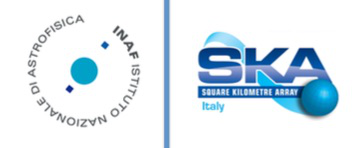Speaker
Description
The improvement in sensitivity of radio telescopes is disclosing a brand new method for searching and characterizing extrasolar planets. Mutual magnetic interaction between an exoplanet and its parent star (or even one of its satellites) can give rise to a electron cyclotron maser emission (ECME), known as auroral radio emission. The radio emission has a peculiar signature in time and in polarization. There are two scenarios: in one case the planet orbiting the star can trigger this emission leading to a ECME in the stellar magnetosphere; in tho other one the stellar wind can trigger the auroral radio emission directly above the planet. Information like the presence of a planetary magnetosphere or of different satellites can be inferred. Current observations of are however heavily hampered by the limited sensitivity, and we expect that a major step forward will be possible only with SKA. Despite this limitation we present two cases we recently studied: the ultra-cool dwarf TVLM 513-46546 and α Centauri. For the first star we used VLA observations at 4.9 and 8.4 GHz to constrain an auroral radio emission model and reproduce the cyclic circularly-polarized pulses of the star. Our model explains the observed radio emission, and in particular its anomalies at 8.4 GHz, as a possible interaction of the star with an external body (Leto et al. 2017). For α Cen, we successfully detected both the stars at 17 GHz, being the first detection ever at these frequencies. We used 2-GHz data to search for time-variable coherent emission as a signature of the claimed Earth-sized planet in close orbit to α Cen B, finding no results (Trigilio et al. 2018). We finally discuss the implication of this early pioneering study in planning and proposing observations with SKA and its precursor, when the unprecedented sensitivity could be unveiling hundreds of these cases.

